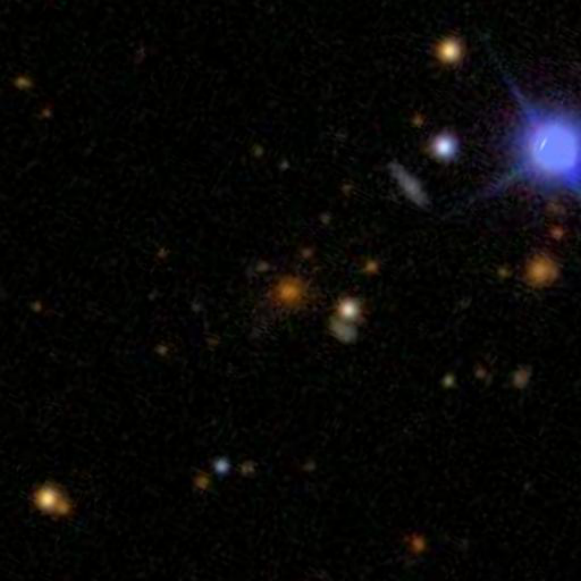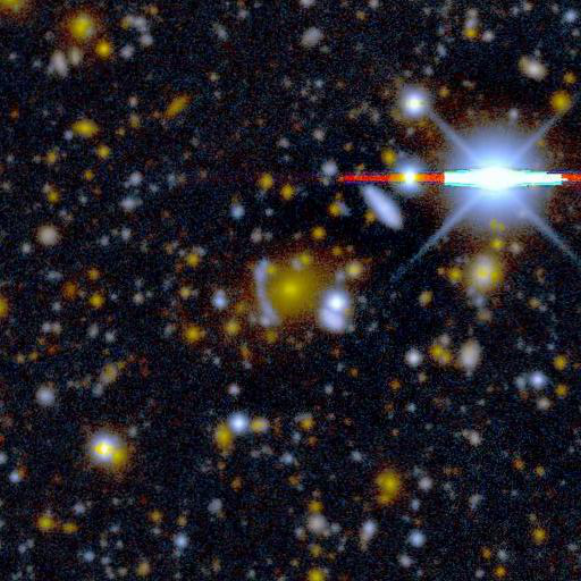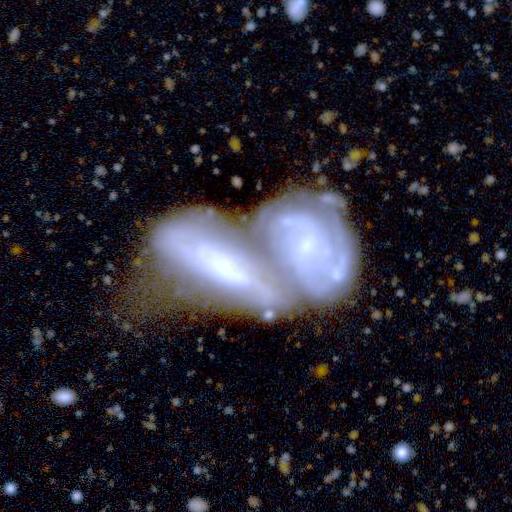Why Go So Deep?
"Going deep" is astronomer-speak for taking longer exposures so that we can see fainter things. Compare these two images of the same area of sky:


The one on the left is from a shallow survey (the Sloan Digital Sky Survey or SDSS) and the one on the right is from the DLS. The deeper survey has three advantages:
- It can detect objects which are too faint for the shallow survey to detect at all. Because faintness is correlated with distance from us, this corresponds to being able to see further into the universe.
- Even for objects which are detected in the shallow survey, the deeper survey obtains a greater signal-to-nise ratio for that object.
- Some objects become interesting only if you can detect their faint
parts. For example, interacting and disturbed galaxies often give no
clue as to their disturbed nature unless you can study very low
surface-brightness features:

The tradeoff in doing a deep survey is that there is not enough time to cover most of the sky so deeply. The SDSS is shallow but it covers 500 times more sky than the DLS! (The DLS is still considered "wide" because it covers 20-700 times more area than surveys with the Hubble Space Telescope; the DLS area is wide enough that it can be considered a representative sample of the universe whereas HST surveys take some risk that the areas they cover are not large enough to be representative.) A whole range of surveys, from narrow and ultradeep to ultrawide and shallow, is necessary to assemble a complete picture of the universe.
For astronomy enthusiasts, here is a comparison of major surveys
from Jee
et al 2013:
